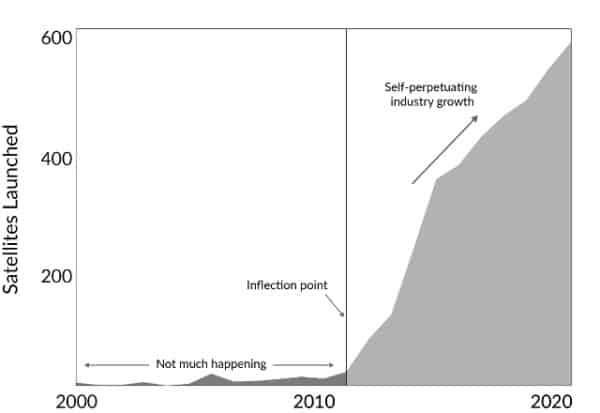
 Toronto-based space telecom IoT infrastructure company Kepler Communications has raised US$5 million in an oversubscribed seed fundraising round, led by New York-based IA Ventures, with participation from Joe Montana’s firm Liquid 2 Ventures, Globalive Capital, BDC and several other private investors.
Toronto-based space telecom IoT infrastructure company Kepler Communications has raised US$5 million in an oversubscribed seed fundraising round, led by New York-based IA Ventures, with participation from Joe Montana’s firm Liquid 2 Ventures, Globalive Capital, BDC and several other private investors.
“IA Ventures invested in Kepler because we believe this infrastructure is needed to advance our society that continues to stretch the carrying capacity of the Earth,” said IA Ventures partner Brad Gillespie, whose company has also invested on companies such as Digital Ocean and X.ai.
Kepler Communications graduated from the three-month Techstars startup incubator, which also participated in the round, in Seattle earlier this spring.
This new round brings the company’s total fundraising to US$5.5 million to date.
Kepler will use the funds to double the size of its six-person workforce and launch two tiny satellites into space in the next 15 months, which are designed to facilitate the ability of connected machines to transmit information in real time, such as asset tracking data, photos, and weather predictions, regardless of where they are in the world.
“Since our satellites are small they’re significantly cheaper and can be replaced with newer technology every two to three years,” said Kepler CEO Mina Mitry. “Compared to conventional satellites that would operate for eight years or more with dated technology.”
Kepler’s low-cost, replaceable “CubeSats” are roughly the size of a loaf of bread, allowing the company to replace them frequently and adapt to new technologies more quickly that traditional satellites.
“This approach aligns well with our strategy to incrementally deploy infrastructure to meet customer demand and learn along the way,” says Mitry.
Mitry, who completed an undergraduate degree and partial PhD studies in aerospace engineering at the University of Toronto, before going on to work at aerospace manufacturer Pratt & Whitney, has described the CubeSat idea as a cell phone tower network in space.
Since then, Mitry has worked on a number of startups, including some time as Director of Engineering at teaBOT, which also has UofT connections.
“Today, space-borne data can be hours delayed causing critical information to be missed,” said Mitry. “There are industries that can’t rely on satellite data because of the latency.”
Kepler intends to launch its two CubeSats near the end of 2017, using to-be-announced launch partners.
In a recent blog post inspired by fellow space enthusiast Elon Musk’s “Master Plan” for Tesla, Mitry wrote a master plan of his own for Kepler.
“We’re enabling a space economy that will allow for the continued advancement of a society that continues to stretch the carrying capacity of the Earth,” he writes. “We’re not alone in this endeavor; new companies are created every day, addressing the need for launch capacity, developing in-space resources, or democratizing space access.”
How many satellite companies? Mitry includes a handy diagram showing the recent inflection point for the explosion of smaller companies working to 1) Build a satellite platform 100x cheaper 2) Sell a niche service to early adopters 3) Use the money to fund mass production and 4) Sell a cheaper telecom service.

Leave a Reply
You must be logged in to post a comment.



 Share
Share Tweet
Tweet Share
Share




Comment